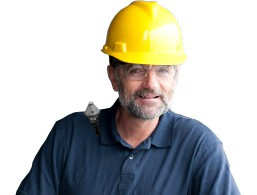Noise dosimeters and personal sound exposure meters for use in factories and other industrial environments. The doseBadge noise dosimeter mounts on the shoulder, where it continuously monitors the sound levels that the worker is being exposed to.

A shoulder mounted noise dosimeter for the toughest environments. Meets the noise at work regulations to monitor a worker's exposure to high sound levels.

A shoulder mounted noise dosimeter for monitoring a worker's exposure to noise. This model has powerful data logging ability with download to a computer for reporting. It also has octave band filters for detailed hearing protector assessment.

An approved (ATEX) noise dosimeter for use in hazardous and potentially explosive environments. Monitors a workers exposure to noise throughout the working day.

A kit with both doseBadge Pro noise dosimeters and a hand-held sound level meter for spot checks.

A kit with doseBadge Pro noise dosimeters and an integrating sound level meter for more detailed occupational noise assessments.

A kit with doseBadge Pro noise dosimeters and an octave band sound level meter. For industrial sites with very high noise levels.

This kit is for monitoring both inside and outside the workplace. The doseBadges and the meter can be used for noise at work assessments, while the meter is also suitable for environmental noise surveys.

A noise dosimeter is a small device that is carried by somebody working in a potentially noisy environment. It consists of a microphone that mounts near the worker's ear to continuously measure the noise levels throughout the work shift.
Older style noise dosimeters had a box that clipped on the belt with a cable to the microphone that clipped on the lapel. Thankfully technology has allowed for a much smaller size device, so all the models we offer have no cables and mount on the worker's shoulder.
There are two methods that are used to check a worker's noise exposure levels. One method is to use a hand-held sound level meter to measure the typical sound levels at the work locations and then put them all together to calculate the overall exposure or TWA. The other method is to use a noise dosimeter, which stays with the worker and measures/calculates the noise exposure automatically.
The benefits of using a noise dosimeter are that you don't have to carry out the noise exposure or TWA calculations manually and that you don't have to follow the worker to each location to get a sample of typical noise levels. This is particularly important in hazardous environments or areas where this is just not practical. For situations where you need to monitor a worker's exposure but also need to be present sometimes and make manual measurements we have the Combination Kits, which include noise dosimeters and a sound level meter.